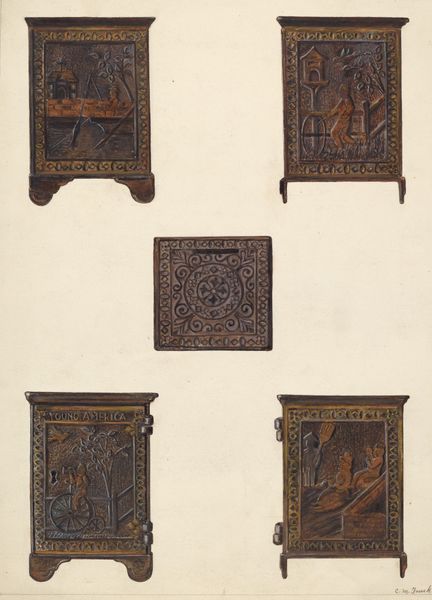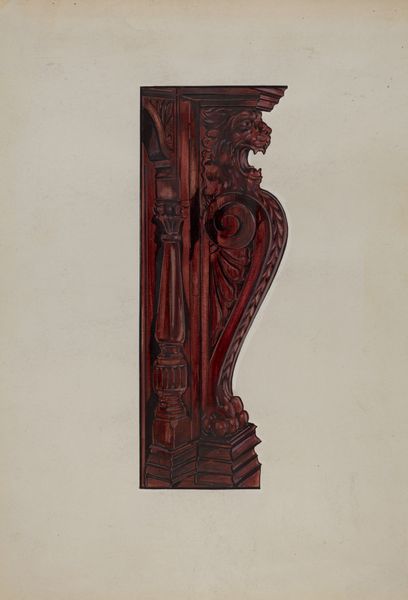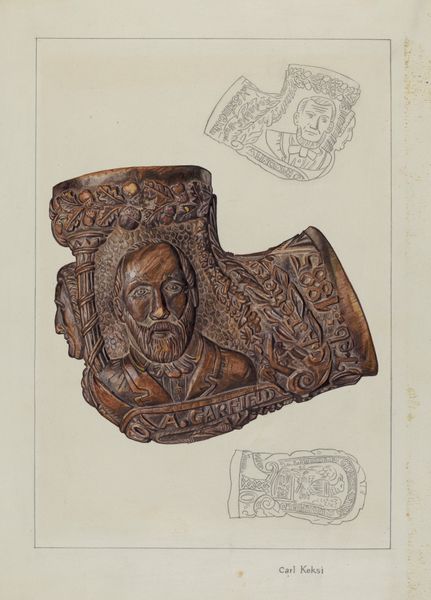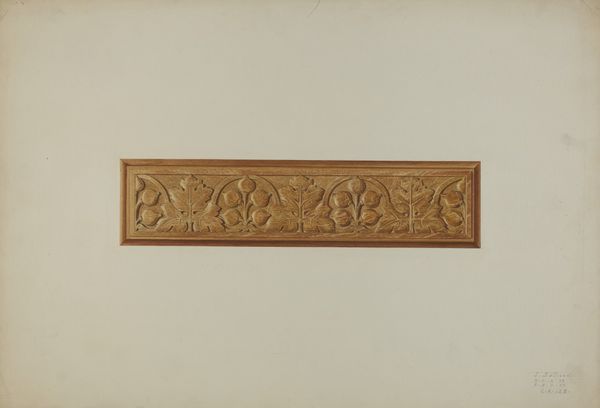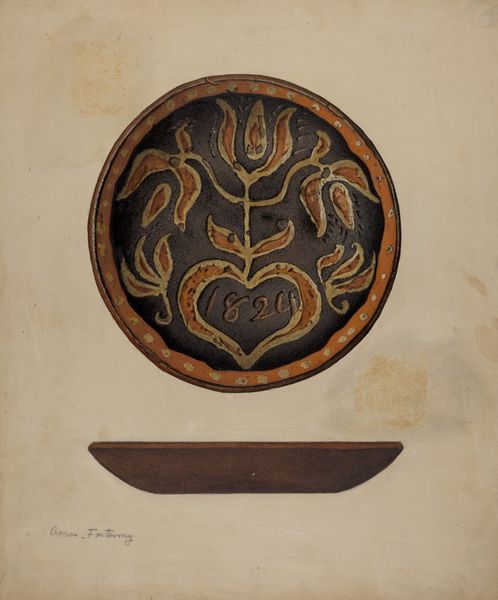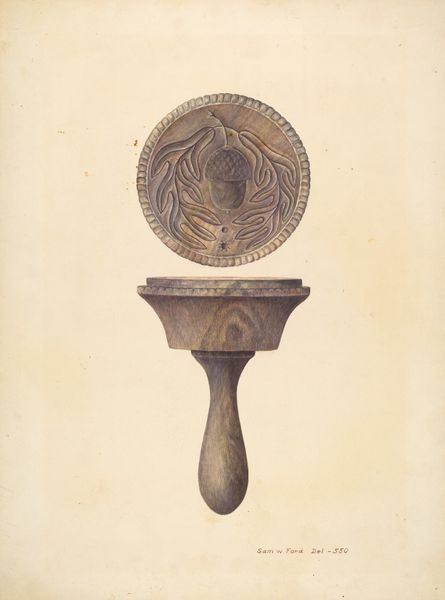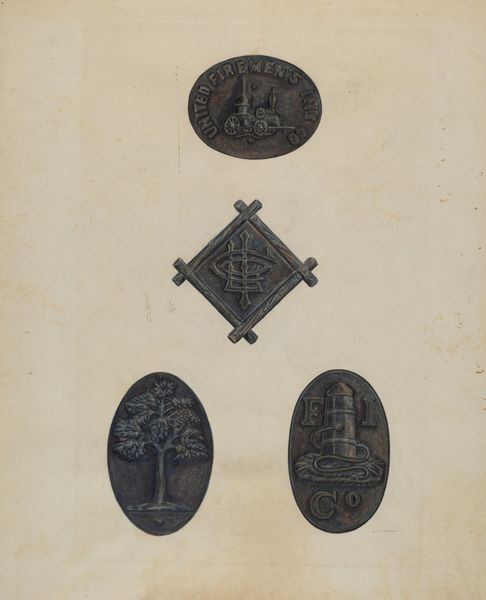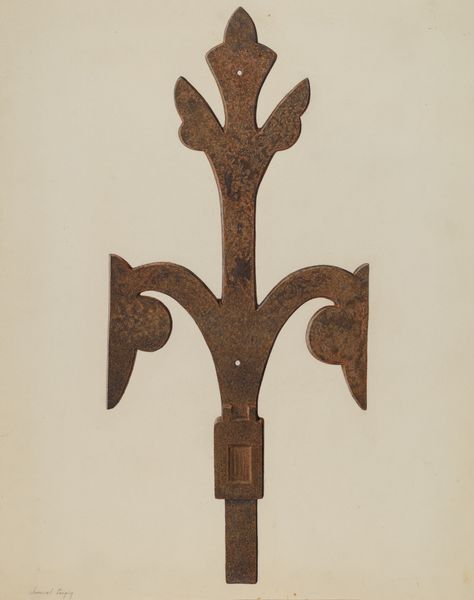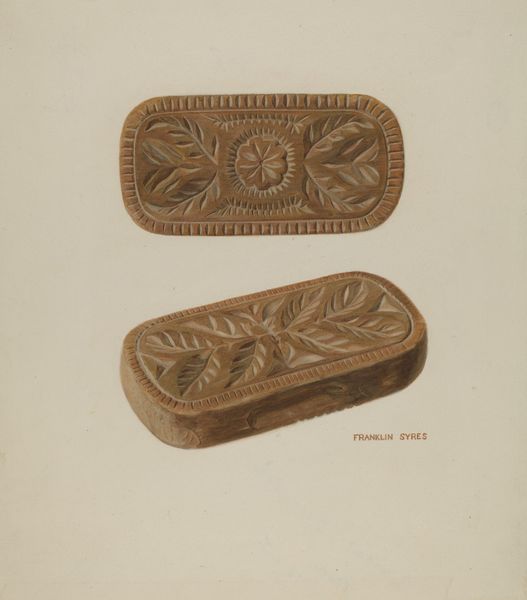
watercolor
#
watercolor
#
watercolour illustration
#
watercolor
Dimensions: overall: 38.9 x 26.2 cm (15 5/16 x 10 5/16 in.)
Copyright: National Gallery of Art: CC0 1.0
Curator: This watercolor by Charlotte Angus, simply titled "Textile Stamp," was created around 1937. What are your immediate impressions? Editor: The rendering is quite compelling; it has an archaeological quality—these brown-toned stamps, floating against an unprimed canvas, appear as artifacts needing immediate analysis and historical context. I want to know the era of the physical objects depicted here and how people engaged with them! Curator: From a historian's point of view, what strikes me most is the transition from the handmade to mass production. Stamps like these were vital in textile production and can illuminate patterns of trade, class, and even cultural exchange during that time. These examples appear rooted in pre-industrial modes. The inscription "EP 1772" on one could hint at its era or provenance, revealing its origins and initial socio-economic context. Editor: True. Consider, then, that each pressing was also an act of resistance or assertion, even when done under duress of commerce. To what extent could artisans imprint more than simply repeating ornament? This artwork feels haunted by untold narratives woven, quite literally, into these fabrics. Curator: It's equally interesting to me, though, that Charlotte Angus created this watercolor so long after the probable original date of the stamps depicted. How were objects like this used, saved, discarded, or appreciated in the time since their creation? These textile stamps could signify various functions, including signing a design like a form of signature. Editor: Yes! We can appreciate the material impact such stamps had—a tangible symbol of a social identity and historical moment that still marks us now. By memorializing them on watercolor, Angus ensured we can access and learn more about past processes that echo in current modes of digital production. Curator: I hadn’t thought about the resonance with current issues. This small piece contains an invitation to think expansively, that's for sure! Editor: Indeed. Thank you, Charlotte Angus.
Comments
No comments
Be the first to comment and join the conversation on the ultimate creative platform.
